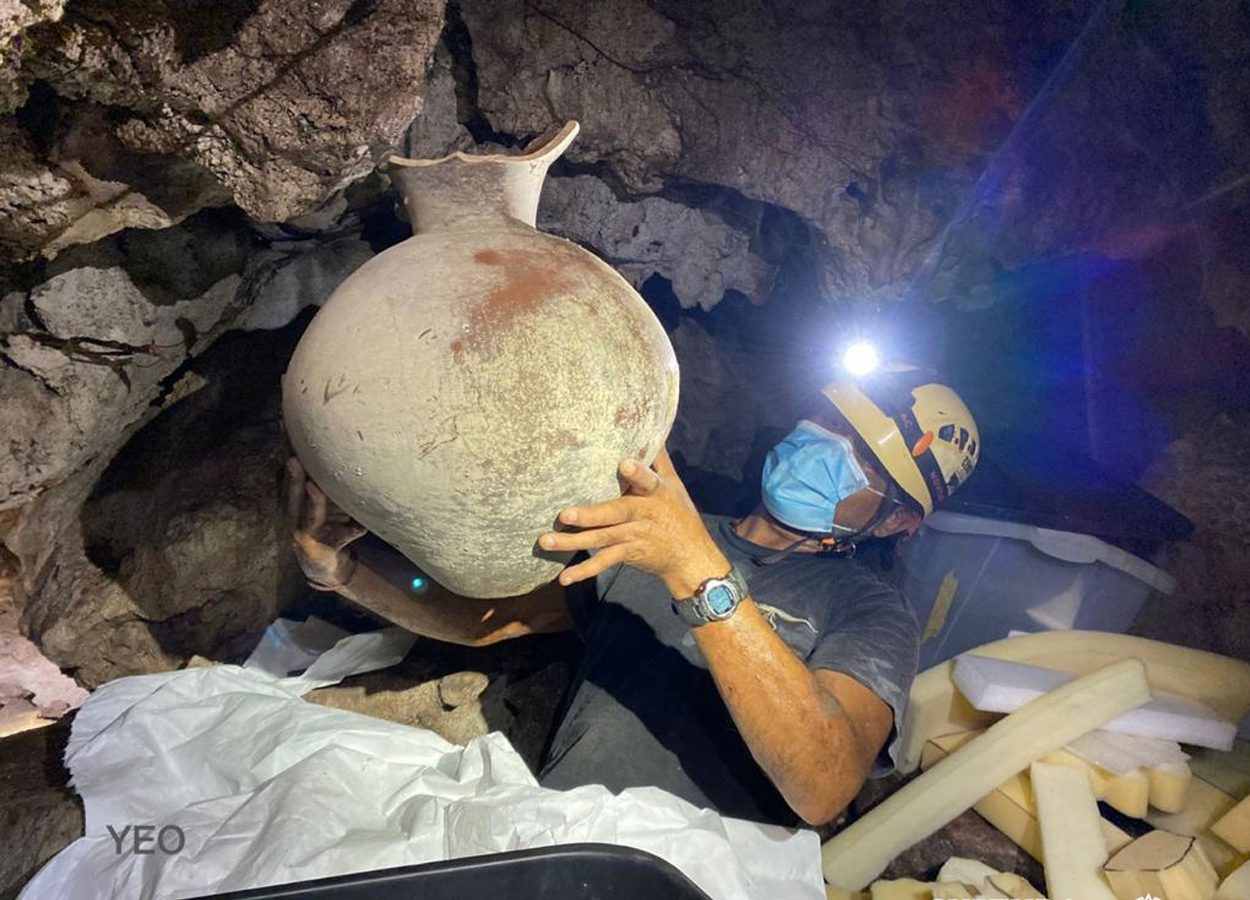Archaeologists have discovered a ceremonial cave site in Chemuyil on the Yucatán Peninsula, Mexico, that dates from the Postclassic Maya period.
The Maya believed that the universe was divided into the sky, the earth, and the underworld, in which caves functioned as a portal or gateway to Xibalba, an underworld realm ruled by the Maya death gods and their helpers.
The Instituto Nacional de Antropología e Historia (INAH was notified of the site by personnel from the civil association Círculo Espeleológico del Mayab and the Urban Cenotes Project of Playa del Carmen, who identified archaeological remains whilst mapping cave systems in the region.
A team was dispatched under the direction of archaeologist Antonio Reyes, who found two vessels, one complete and one fragmented, as well as a tripod bowl that date from the Late Postclassic Maya (1200–1550 AD).

The first is a Navulá-type monochrome vessel which still has one of its two handles, whilst the second is a globular pot, which was found fragmented because of tree roots that crushed the vessel against some rocks.
Both vessels were positioned in natural niches where water dripped down from stalactites, whilst the tripod bowl was placed face down and covered with stones. The researchers believe that the bowl was a ceremonial offering, whilst the two vessels were used for the ritual collection of water from the stalactites.
Although there are no major Maya centres within Chemuyil, the people living in the area between Playa del Carmen and Tulum often used many of the natural cavities, cenotes and cave systems for ceremonial purposes.
Header Image Credit : Antonio Reyes





